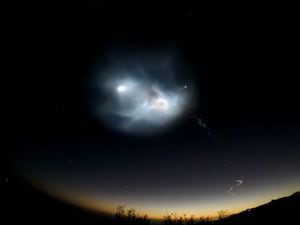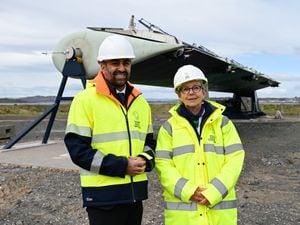Here’s the science behind the spectacular light show caused by a SpaceX launch
Brad Gibson, head of physics at the University of Hull, has revealed why we saw such a remarkable sight.

The skies above Los Angeles were alight with a remarkable sight as SpaceX launched a satellite into orbit on its Falcon 9 rocket.
A burst of light could be seen over the Californian city for a number of minutes as the spacecraft, an Argentinian Earth-observation satellite, detached from its booster in the night sky.
So what caused the stunning display of light? Well, Brad Gibson, head of physics at the University of Hull, has the scientific explanation.
“You are seeing the same effect as one sees in planes, ie contrails forming – ice crystals condensing out of the exhaust vapour,” Brad told the Press Association.
“In this case, this was happening high enough in the atmosphere that, while to us on the surface the Sun had set 30 minutes earlier, up there, the ice crystals get lit up by the Sun, giving us a spectacular display down here on Earth.
“It certainly was spectacular and it led to a massive spike in Google searches for the phrase ‘UFO’, because it gave that sort of visual appearance.
“Elon Musk does these night-time launches for this exact purpose. He is a master in getting us to talk about SpaceX and Tesla.”
Indeed, many onlookers from the ground were stunned by what they were seeing.
Fortunately, Los Angeles mayor Eric Garcetti took to Twitter to assuage any concerns of paranormal activity.
While propelling the SAOCOM 1A satellite into orbit, the launch also saw the Falcon 9 rocket’s first stage booster land back at SpaceX’s California launch site for the first time on the US West Coast.
The landing of the booster is part of efforts by the space transportation service to cut the cost of space launches by re-using rockets.
The company, owned by Elon Musk, posted a video of the Falcon 9’s launch and successful return.
The satellite launched by Falcon 9 is the first of two for Argentina’s space agency, Comision Nacional de Actividades Espaciales.
The SAOCOM 1A carries a high-resolution instrument called a synthetic aperture radar, which will be used to try to monitor and predict the severity of natural disasters.
It will be followed by SAOCOM 1B in 2019.





